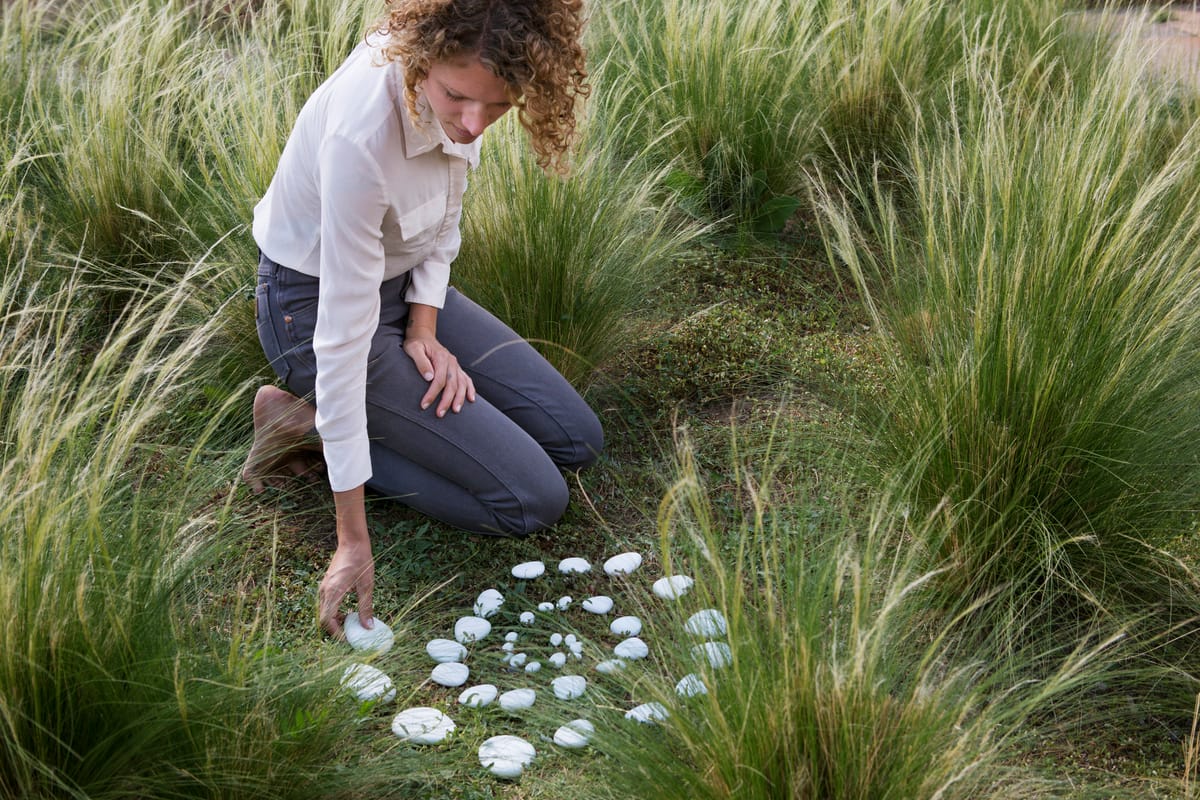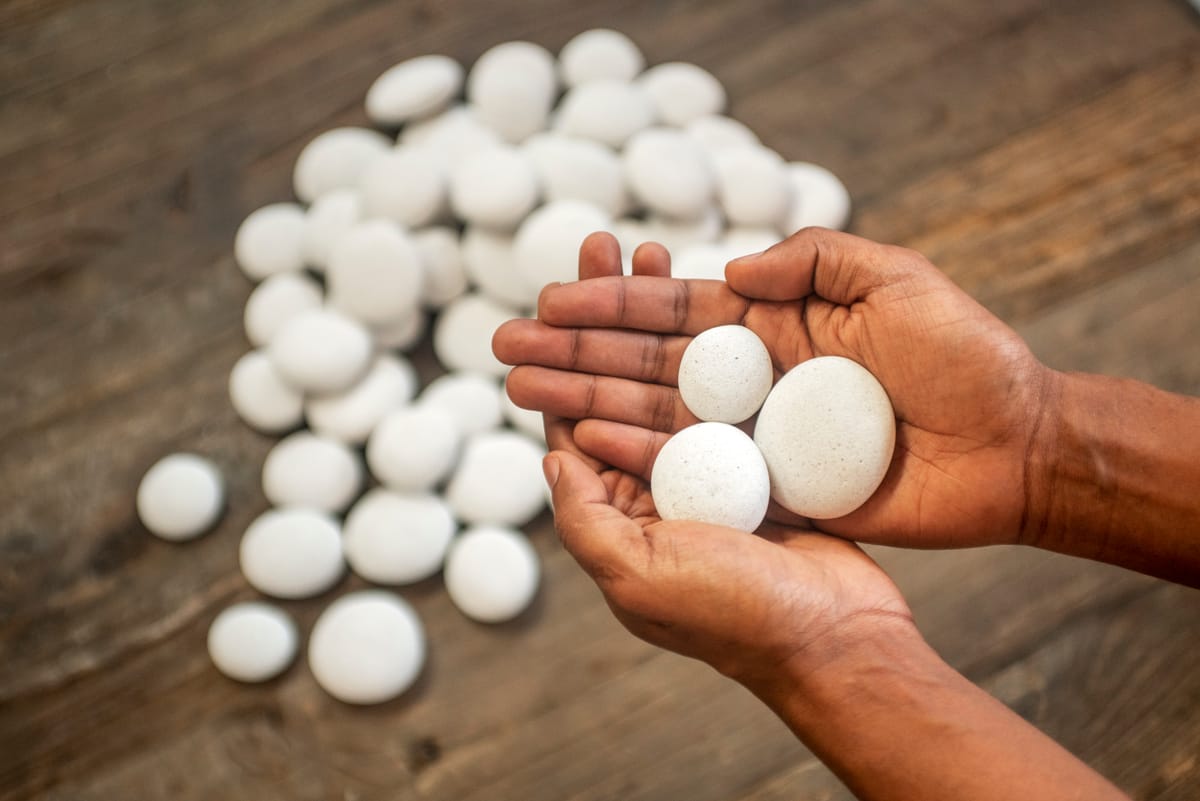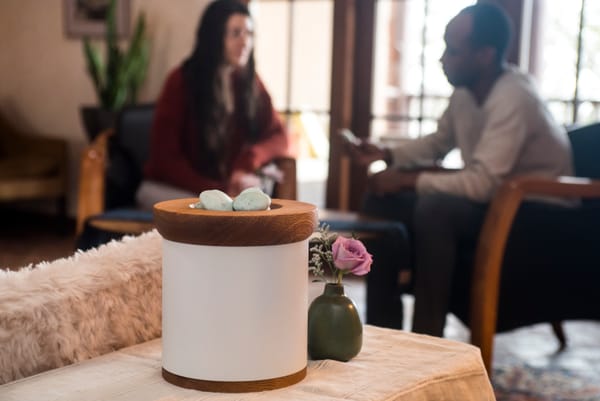Including Adult Children in Memorial Decisions: A Guide to Family Harmony in Grief
Include adult children in memorial decisions effectively. Navigate family dynamics and create meaningful memorials everyone supports.

You're facing not only profound grief but also the delicate task of making memorial decisions that honor your loved one while respecting your adult children's different perspectives. One child wants to scatter the ashes at a meaningful location. Another feels strongly about keeping something tangible. Someone else isn't sure what they want but knows traditional options feel inadequate.
Making adult children memorial decisions while navigating different personalities, relationships with the deceased, and grief expressions is one of the most challenging aspects of loss. You want to honor your loved one. You want family harmony. And you're trying to do both while managing your own heartbreak.
The good news is that including family in memorial planning doesn't have to create division. With thoughtful communication and an understanding of what makes these decisions so complex, you can create a memorial approach that brings your family together rather than pulling you apart.
Key Takeaways
- Family memorial planning requires balancing individual perspectives while honoring your loved one's memory authentically
- Clear communication and structured decision-making processes reduce conflict and create space for everyone's grief
- Memorial options that can be divided among family members help address diverse needs while maintaining unity
- Generational differences in how we approach memorialization are natural and can strengthen rather than complicate the process
- Including adult children early in conversations prevents resentment and creates shared ownership of memorial choices
Reflections on love, loss, and the ways we carry them.
In memorial planning, choices with adult children often feel impossibly complex. You are not merely picking containers or ceremonies; you are navigating family stories, old hurts, and the many ways people love. The pressure to get it “right” can be crushing because every decision will carry emotional weight for years to come.
Sibling patterns surface during loss: the controller, the peacemaker, the absent one. These roles are familiar; grief simply turns up the volume. Recognizing these dynamics without blame lets you approach conversations with gentleness rather than judgment.
People grieve differently. One child needs immediate action; another needs time. One wants tradition; another wants something new. None of these responses are wrong. They are different languages of love.
Practical tools ease the load. Start by asking open questions: what matters most to you? Document shared priorities. Consider divisible memorials that honor multiple needs—keeping some, scattering some, or transforming remains into shareable memorials like solidified stones that family members can hold.
In my practice a family argued for weeks over scattering a father’s ashes. The siblings were divided. We established a framework: a short ceremony, then a shared set of stones processed into stones so each sibling could keep a portion. At the lake, grief found a gentle ritual; at home, stones became quiet anchors. The choice reduced conflict and gave everyone a way to remember.
Good memorial planning is less about everyone getting their way and more about everyone feeling heard. When we listen deeply, document decisions, and choose options that allow sharing rather than exclusion, memorials become not a source of division but a bridge. One that is built from care, memory, and the imperfect, tender work of family. Take your time; grief changes, and memorial choices can too. Permit yourselves patience, small rituals, and compassionate compromise as you remember together, always lovingly.
Cathy Sanchez Babao
Parting Stone Grief Coach
Understanding Why Family Memorial Decisions Feel So Complicated
When you're making memorial decisions involving adult children, you're not just choosing between urns or burial plots. You're navigating decades of family dynamics, individual grief styles, and deeply personal relationships with the person who died.
The Emotional Weight of Getting It "Right"
As the primary decision-maker, you might feel crushing pressure to make choices that everyone approves of. This isn't just about logistics. Each memorial decision carries emotional significance that extends far beyond the practical details. You're aware that whatever you choose will shape how your family remembers and connects with your loved one for years to come.
This pressure intensifies when adult children have strong opinions that conflict with each other or with what you believe the deceased would have wanted. You might find yourself caught between honoring your own grief needs and managing everyone else's expectations.
Why Sibling Dynamics Resurface During Loss
Adult children memorial decisions often activate old family patterns. The sibling who always needed to be in control might try to dominate the planning. The one who typically avoids conflict might withdraw entirely. Birth order dynamics, childhood rivalries, and longstanding resentments can all surface when families face the shared trauma of loss.
Understanding this isn't about assigning blame. It's about recognizing that grief doesn't happen in a vacuum. Your family's history influences how everyone approaches memorial planning, and acknowledging this reality helps you navigate conversations with more compassion and less frustration.
One family member shared: "When I picked up the stones and felt it today, I sobbed and held the stone tight. It felt so beautiful and reminded me that although my brother had his addictions, he was my angel. And I miss him."
The Problem with Assuming Everyone Grieves the Same Way
Perhaps the biggest challenge in including family in memorial planning is that people process loss in different ways. One adult child might want immediate action and concrete plans. Another might need weeks or months before they can engage with memorial decisions. Some family members find comfort in traditional approaches, while others seek something entirely new.
These differences don't mean anyone is grieving wrong. They reflect the reality that your loved one had unique relationships with each family member. Your spouse wasn't just your partner; they were also someone's parent, someone's in-law, and someone's friend. Each of those relationships deserves recognition in how you approach memorialization.

Creating Space for Honest Family Conversations
The foundation of inclusive memorial planning is communication that allows everyone to feel heard, without requiring complete agreement. Here's how to structure conversations that acknowledge different needs while moving toward decisions.
Starting the Conversation: Timing and Approach
You don't need to have all the answers before bringing adult children into memorial discussions. In fact, approaching these conversations with genuine openness rather than predetermined solutions often leads to better outcomes.
Consider starting with questions rather than statements. "I want to make sure we honor Dad in a way that feels meaningful to all of us. Can we talk about what matters most to each of you?" This invitation creates space for sharing without the pressure of immediate decisions.
Timing matters too. Some families benefit from discussing memorial preferences before they're needed, removing the time pressure and emotional intensity of acute grief. If you're planning in the immediate aftermath of loss, acknowledge that not everyone may be ready to engage fully. That's okay. You can make initial decisions while leaving room for adjustments later.
Language That Opens Dialogue Instead of Creating Defenses
How you phrase things during family memorial decisions significantly impacts how people respond. Here are some conversation starters that tend to reduce defensiveness:
Instead of: "We need to decide what to do with Mom's ashes."
Try: "I've been thinking about how we can honor Mom in a way that feels right for our family. I'd love to hear your thoughts."
Instead of: "Your brother already said he wants to scatter the ashes, so that's what we're doing."
Try: "Your brother mentioned scattering as one option. Before we decide, I want to understand what would be meaningful for everyone."
Instead of: "I don't think that idea will work."
Try: "Help me understand what appeals to you about that approach. What need would it meet for you?"
These small shifts in language signal that you're genuinely interested in collaboration rather than just seeking approval for decisions you've already made.
When Family Members Disagree: A Framework for Finding Common Ground
Disagreement during memorial planning doesn't mean failure. It often reflects the depth of love different family members had for the deceased. The goal isn't forced unanimity; it's finding an approach that respects diverse needs while honoring your loved one.
When conflicts arise, try this process:
- Identify the underlying need. Often, what appears to be a disagreement about logistics is actually about different emotional needs. One person's insistence on keeping all the ashes together might stem from fear of loss. Another's desire for something shareable might come from a need for ongoing connection.
- Explore whether needs can coexist. Many memorial conflicts assume a binary choice when creative solutions might address multiple needs simultaneously. For example, families who initially disagreed about scattering versus keeping remains have found peace in memorial approaches that allow both.
- Acknowledge what cannot be compromised. Sometimes you'll encounter genuinely conflicting values. When this happens, being transparent about constraints while validating feelings can be helpful. "I hear that you'd prefer burial, and I understand that comes from your faith traditions. Dad explicitly requested cremation, so while I can't change that decision, I want to find ways to honor what matters to you in other parts of the memorial."
- Make decisions while preserving relationships. Even when you can't please everyone, you can ensure everyone feels heard and respected. Sometimes the process of working through disagreements together strengthens family bonds even when the outcome isn't everyone's first choice.
Memorial Approaches That Support Multiple Family Members
One of the most effective ways to reduce conflict surrounding adult children's memorial decisions is to choose memorial approaches that inherently accommodate diverse needs. When the solution itself creates space for individual connection while maintaining family unity, many disagreements resolve naturally.
The Challenge of All-or-Nothing Memorial Options
Traditional memorial choices often force families into either-or decisions. Burial in a single plot. Scattering all the ashes in one location and keeping everything in one urn. These approaches work beautifully for some families, but they can create tension when adult children have different needs or live in other locations.
The problem isn't with these traditional options themselves. It's that they don't always reflect how modern families function. Adult children might be spread across different states or countries. Some family members might want something they can hold and keep close, while others prefer the symbolism of release. One approach that works perfectly for you might leave another family member feeling disconnected from the memorial process.
As one customer shared: "The stones will allow my MIL and their grandkids to spread them at all their favorite locations including on our family vacation to WDW. They all get to keep a piece of him with them."
Divisible Memorial Options: When Everyone Can Participate
Memorial approaches that can be divided among family members often solve problems that seem insurmountable with traditional options. When each adult child can receive a portion of their loved one's remains, it addresses several challenges simultaneously.
Geography stops being an obstacle. The daughter in California and the son in Maine can both have a meaningful connection without requiring one person to sacrifice their needs for another's. Different grief styles get honored. The family member who finds comfort in having something tangible can keep a portion close to them. In contrast, the sibling who needs the ritual of scattering can do so without preventing others from having their own experience.
Some families appreciate memorial jewelry or keepsakes made from small amounts of ashes. These options work well for certain situations, but they typically use only a tiny fraction of the remains, leaving families with the question of what to do with the vast majority that remains.
Solidified remains offer a different approach. Through an 8-10 week process, cremated remains are transformed into smooth stones that can be held, shared, and cherished. Each family member can receive stones to keep, place in meaningful locations, or use in their own memorial rituals. The tactile nature of stones offers comfort that many find lacking in conventional ashes.
One mother described her experience: "When the stones were received, I separated them into five groups: one for each of our children's families and one for myself. They were extremely grateful. I always have one stone sitting on my prayer book. On tough days, I take it, hold it in my hand and feel peace."
This type of memorial flexibility is particularly supportive of families where including family in memorial planning means accommodating different spiritual traditions, varied proximity to the deceased, or simply different ways of maintaining connection. Each person gets to honor the relationship in their own way without preventing others from doing the same.
Creating Shared Experiences Alongside Individual Memorials
Even when memorial approaches allow for division, many families find meaning in creating shared experiences as well. These might include:
A memorial gathering where family members receive their portions of the remains together, sharing memories and supporting each other in grief. Planning a family trip to a meaningful location where everyone can participate in placement or scattering rituals, with each person keeping some stones as well. Creating a family memorial space, like a garden or dedicated area in someone's home, that everyone contributes to and visits.
The key is that shared experiences complement rather than replace individual memorial choices. This both-and approach often satisfies the desire for family unity while respecting personal grief needs.
| Memorial Approach | Supports Multiple Locations | Allows Individual Rituals | Provides Tangible Connection | Accommodates Varied Timelines |
|---|---|---|---|---|
| Single burial plot | No | No | Limited | No |
| Scattering all remains | No | No | No | No |
| Single urn storage | Limited | Limited | Limited | Limited |
| Memorial jewelry (from small amount) | Yes | Yes | Yes | Yes |
| Solidified remains (divisible) | Yes | Yes | Yes | Yes |
Navigating Generational Differences in Memorial Choices
When making family memorial decisions, you often bridge not just different personalities but also other generations with distinct perspectives on death, memorialization, and what feels respectful or appropriate.
How Different Age Groups Approach Memorialization
Older generations, who were raised with more formal funeral traditions, might gravitate toward approaches they recognize, such as burial plots, traditional urns, or ceremonies that follow established religious or cultural protocols. There's comfort in the familiar, especially during grief.
Younger adult children might be more open to contemporary approaches. They've grown up in a world where customization and personalization are valued across all aspects of life. They might research memorial options online, seek out alternatives to tradition, or prioritize environmental considerations.
Neither perspective is wrong. They reflect different cultural contexts and life experiences. The challenge arises when these generational differences lead to judgment or dismissiveness. "That's too weird" versus "That's too old-fashioned" are both statements that shut down productive conversation.
Finding the Bridge Between Tradition and Contemporary Choices
The most successful family memorial consensus often comes from recognizing that tradition and innovation aren't opposites. You can honor traditional values while embracing contemporary approaches that better serve your family's specific needs.
For example, many families maintain traditional memorial services and gatherings while choosing non-traditional approaches for the remains themselves. The ceremony provides the familiar structure and community support that matters, especially to older generations. At the same time, the memorial choice reflects the practical and emotional needs of adult children managing long-term remembrance.
Another bridge-building approach involves educating all generations about why specific options appeal to different family members. When your mother understands that your preference for something tangible stems from the same desire for connection that drives her preference for a cemetery plot, you've created understanding even if preferences differ.
When One Generation Must Make Final Decisions
Sometimes the responsibility for final decisions falls to one generation, most often adult children making choices after a parent's death. In these situations, honoring generational differences may mean consulting with older family members about what values matter most, even if the specific implementation differs from what they would choose.
"Dad would have wanted something traditional" is a valid consideration. So is "We need something that works for our lives and our grief." Often, both can be true simultaneously, leading to memorial choices that honor the spirit of tradition while serving the practical needs of those doing the long-term grieving.

A Practical Framework for Inclusive Memorial Planning
Moving from conversation to decision requires a structured approach. Here's a step-by-step process for making family memorial decisions that honors everyone's input while still concluding.
Step 1: Gather Information Before Proposing Solutions
Before discussing specific memorial options, focus conversations on understanding. Ask each adult child to share what matters most to them about how their loved one is memorialized. Listen for themes. Do people express a need for something permanent? Something they can touch? Something that allows for ritual? Something that fits with their spiritual beliefs?
Document these needs without judgment. You might discover that what seemed like conflicting desires actually stems from similar underlying values expressed differently.
Step 2: Research Options That Address Multiple Needs
Armed with an understanding of what matters to your family, research memorial approaches that might serve multiple needs simultaneously. This is where creativity and openness to alternatives become valuable. You might discover options you hadn't previously considered that elegantly solve problems that seemed impossible.
Step 3: Present Options Without Predetermined Preferences
When you bring options back to the family, present them as genuine choices rather than seeking approval for a decision you've already made. Share how each option addresses the different needs of family members as expressed. Be honest about constraints, whether financial, logistical, or based on the deceased's known wishes.
Step 4: Make Decisions With Clear Timelines
Grief can make decision-making feel impossible, leading some families to postpone choices indefinitely. While you shouldn't rush, having gentle timelines can be helpful. "Let's each take a week to think about these options, then reconvene," gives space for processing without allowing decisions to languish indefinitely.
Step 5: Document Decisions and Create Space for Adjustment
Once you've made a decision, document it. Send a summary to everyone involved, confirming what you've decided and why. This prevents misunderstandings later. Also, acknowledge that some aspects might need adjustment as your family's needs evolve. Memorial planning doesn't have to be permanent and unchangeable to be meaningful.
Creating a Family Memorial Agreement
For complex family situations, consider creating a simple written agreement that outlines your memorial plan. This doesn't need to be a legal document. It's simply a shared understanding that includes what you've decided, who's responsible for what aspects, and how costs will be handled.
This level of clarity prevents future conflicts and ensures that everyone understands not only the decisions but also the reasoning behind them.
Moving Forward Together
Including adult children in memorial decisions isn't about achieving perfect agreement; it's about respecting their wishes. It's about creating a process where everyone feels respected, heard, and able to honor their loved one in ways that support their unique grief journey.
The families who navigate this well don't necessarily have easier circumstances or simpler dynamics. They approach memorial planning with the understanding that how they make decisions matters as much as what they decide. The conversations themselves become part of how you honor your loved one, demonstrating that even in death, family love requires patience, understanding, and willingness to hold space for different needs.
As you move through this process, be gentle with yourself and with your family members. You're all navigating profound loss while trying to make decisions that feel impossibly important. There's no single right way to memorialize someone you love. There's only one way that serves your family's healing while honoring the person whose absence created this need.
If you're struggling with conventional memorial options, know that alternatives exist. Solidified remains, which transform cremated remains into smooth stones over 8-10 weeks, allow each family member to have a tangible portion they can hold, share, and cherish. At $2,495 for the complete service, this approach provides the flexibility many families need when including adult children in memorial planning.
Whatever choices you make, trust that your thoughtfulness in including family in memorial planning honors both your loved one and the family they left behind. The memorial that emerges from genuine collaboration and respect for different needs will serve your family's healing far better than any choice imposed without input.
You're doing important work. Take your time. Listen deeply. And remember that the goal isn't perfection, it's creating space for each person's grief while maintaining the family connections your loved one valued.
Frequently Asked Questions
How do you include adult children in memorial planning?
Start by having open conversations about what matters most to each family member before discussing specific options. Ask questions like "What would feel meaningful to you?" and "How would you like to stay connected to their memory?" This approach allows everyone to express their needs before you narrow down to specific memorial choices. Create space for different perspectives and look for memorial approaches that can accommodate diverse needs, such as options that can be divided among family members so each person can participate in their own way.
What should adult children consider when planning a memorial?
Adult children should consider both practical logistics like geographic distance between family members and emotional needs like whether people want something tangible to hold or prefer symbolic gestures like scattering. Think about generational differences in how family members approach memorialization and whether the deceased expressed any preferences. Consider your family's financial situation and timeline constraints. Most importantly, focus on finding approaches that honor your loved one while supporting each family member's unique grief journey rather than forcing everyone into a one-size-fits-all solution.
How do families make memorial decisions together?
Successful family memorial consensus starts with understanding each person's underlying needs before proposing specific solutions. Create a structured process where everyone shares what matters most to them, research options that might address multiple needs simultaneously, present choices without predetermined preferences, and make decisions with clear but gentle timelines. Document what you've decided and why to prevent future misunderstandings. The key is treating the decision-making process as collaborative rather than seeking approval for choices already made.
What memorial options allow multiple family members to participate?
Several memorial options support multiple participants including memorial gardens where different family members can contribute plants or markers, memorial jewelry made from small amounts of ashes that can be distributed, and solidified remains that transform cremated remains into stones that can be divided among family members. These divisible options work particularly well when adult children live in different locations or have different preferences for how they maintain connection. The goal is finding approaches where each person can participate meaningfully without preventing others from having their own experience.
How do you handle disagreements about memorial decisions?
When family members disagree about memorial choices, focus on identifying the underlying emotional need driving each preference rather than debating specific logistics. Ask questions like "What would this approach provide for you?" to understand the deeper concern. Explore whether different needs can coexist through creative solutions rather than assuming binary choices. When genuine value conflicts emerge, acknowledge what cannot be compromised while validating everyone's feelings. Prioritize preserving family relationships over winning arguments, ensuring everyone feels heard and respected even when the final decision isn't their first choice.
Why are memorial decisions involving adult children so difficult?
Memorial decisions involving adult children activate complex family dynamics including different relationships with the deceased, varied grief styles, longstanding sibling patterns, and generational differences in approaching death and memorialization. As the primary decision-maker, you might feel pressure to honor everyone's wishes while also managing your own grief. These decisions carry emotional weight beyond practical logistics because they shape how your family remembers and connects with your loved one for years to come. The difficulty reflects the depth of love and the complexity of family relationships rather than indicating you're doing something wrong.
References
American Psychological Association. (2023). Grief and loss. https://www.apa.org/topics/grief
National Funeral Directors Association. (2024). Cremation trends and statistics. https://nfda.org/news/statistics
Wolfelt, A. D. (2023). Understanding your grief: Ten essential touchstones for finding hope and healing your heart. Companion Press. https://www.centerforloss.com/
Center for Loss & Life Transition. (2024). Grief counseling and support resources. https://www.centerforloss.com/grief-support/
What's Your Grief. (2024). Family dynamics in grief. https://whatsyourgrief.com/family-dynamics-grief/
National Alliance for Grieving Children. (2024). Supporting grieving families. https://childrengrieve.org/
Psychology Today. (2024). Family therapy and grief counseling. https://www.psychologytoday.com/us/basics/grief
Funeral Consumers Alliance. (2024). Planning guide for cremation options. https://funerals.org/








